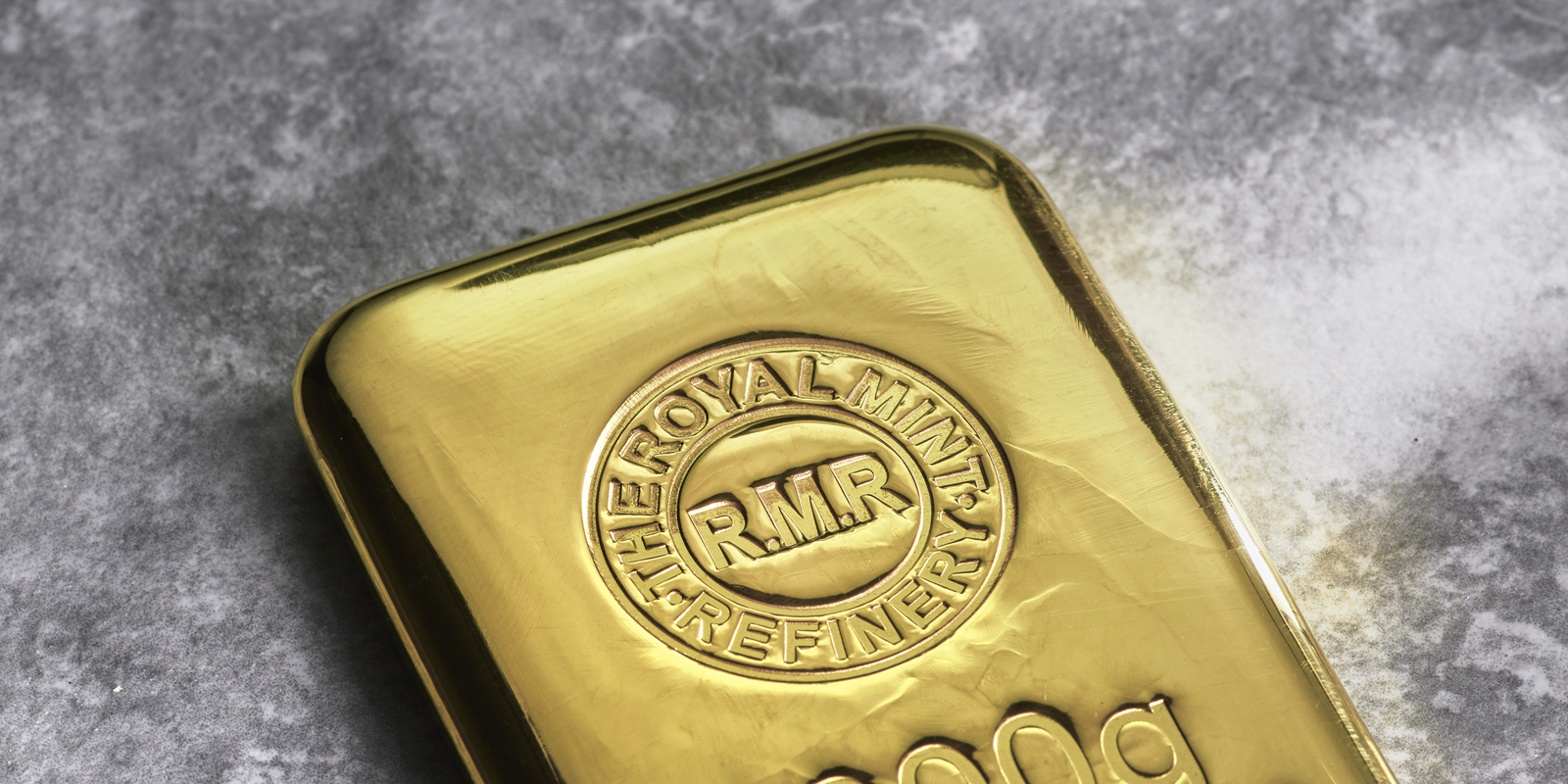The Royal Mint Precious Metals 2020 Round Up
2020 was a year like no other, and 2021 looks sets to be just as monumental. Here we look at the key events and news stories that impacted the price of precious metals last year, and what it could mean for 2021.
January 2020
2020 began by recording an early surge in the gold price, hitting highs of over $1,500 an ounce; levels which previously had not been seen since April 2013. The already volatile precious metal market was initially shaken following the rising tensions between the USA and Iran.
Oil prices began to trade up due to international supply concerns, with gold demand increasing steadily as a consequence. Later in the month, both the gold price and silver price rose again as a result of US job creation figures which were lower than predicted.
January was also when the world, and the markets, began to react to the emerging coronavirus. While the UK Foreign and Commonwealth Office advised against all but essential travel to China towards the end of January, discussion was immediately turned to the possible effect on international markets. On the 30th January 2020, The World Health Organisation declared the outbreak of the new Coronavirus to be a Public Health Emergency of International Concern and issued a set of Temporary Recommendations – markets reacted accordingly.
February 2020
At the start of February, the London Bullion Market Association (LBMA) published its Annual Forecast Survey. This report is eagerly awaited by many in the industry as it aims to predict, as accurately as possible, the average price and range (high and low price) for the year ahead for gold, silver, platinum and palladium. The report had an overall bullish outlook for 2020, with predictions of double-digit increases for each of the four metals (gold and silver +12%, platinum +16% and palladium standing out at +37%). Interestingly, the main drivers which they expected to influence the price were geopolitical tensions (e.g. US elections and Brexit); though monetary policy (e.g. strength of the dollar and interest rates) as well as changes in Indian and Chinese demand also featured.
Indeed, for many market commentators, the outlook at the start of February was one of optimism. At the start of February, we saw a rise in global equities markets, following an initial downturn, and the gold price and silver price fell. This move away from less risky assets was driven by the sentiment that the virus spread was largely under control.
However, as we continued through February, the real effects of the coronavirus were starting to be felt across financial markets worldwide. Experts began to warn that the world was approaching a ‘tipping point’ towards the end of February, as the window to control the spread began to close. As expected in such a situation, equities markets fell and investors turned to the safe-haven of gold, pushing the prices to a high of £1304.49 ($1682.35) on February 24th. Towards the end of the month, the US dollar also fell as the US Federal Reserve hinted that interest rates could be cut in the wake of the coronavirus.
March 2020
We began March with equities falling sharply due to the ongoing situation, with markets in the US being hit particularly hard. In the UK, on the 9th March, the FTSE100 plunged by more than 8% - its largest intraday fall since 2008 and then by over 10% on 12th March – its largest drop since 1987. In related news, the Bank of England cut the baseline interest rate from 0.75% to 0.25% on the 11th March. Then, in an emergency move, the Bank of England cut interest rates again, from 0.25% to just 0.1%; this is the lowest rate in the Bank's 325-year history.
In the US, the Federal Reserve also slashed the US base interest rate by 0.5%. Following the announcement, the Chair of the Federal Reserve said in a statement that whilst the US economy remains strong, it was difficult to predict the "magnitude and persistence" of the apparently advancing threat of the virus within the U.S.
The gold price and silver price also fell during this period, following some initial gains. The World Gold Council suggested that this volatility in the gold price was driven by massive liquidation across all assets, with some investors and traders being forced to sell their precious metal positions to cover losses elsewhere. Indeed, although some considerable swings in the gold price were noted throughout the month, it was still recorded as one of the best performing asset classes with a price increase of over 3.2% across March, when measured in GBP terms. This was reflected in demand for precious metals products at The Royal Mint as we saw sales increase by 743% in March compared to the same period in 2019.
April 2020
During April, investors across the world continued to flock to gold, retaining its status as a ‘safe-haven’ asset. As a result, many precious metal retailers suffered stock shortages; due in part to the massive increase in demand, but also due to supply chain and delivery issues.
Towards the end of April, gold continued to rally, exceeding another record benchmark of £1,400 oz on April 23rd. Many factors were affecting this increase; one of which was the news that the US oil price had turned negative for the first time in history due to falling international demand throughout the year. This extraordinary decline impacted stock markets, bolstering demand yet again for the safe haven of precious metals.
At the end of April, the World Gold Council released its quarterly demand trends report, which suggested record highs for gold-backed ETF holdings of 3,185t in Q1 2020. In comparison, demand for gold jewellery fell to record lows, led by a 65% drop in China, the largest jewellery consumer.
May 2020
Between the end of April and the beginning of May, gold had comfortably sat at around the $1,700 oz mark as demand from investors remained high. Many suggested that China may be emerging out of COVID-related lockdowns, which would bolster the economy in one of the key markets for gold. However, reports from the Shanghai Gold Exchange later in the month suggested that whilst demand was rising, it remained considerably lower than in previous years.
In the UK, the Bank of England warned that the economy was on course to shrink by 14% in 2020 because of the impact of COVID-19. This was said to be likely to push the UK into its deepest recession on record.
June 2020
Following better than anticipated US jobs data at the start of June, the gold price initially took a dive back below the $1,700 ceiling, after the US Labor Department reported that 2.5 million Americans re-entered the workforce in May. Stock prices on Wall Street rallied on the news, however many remained pessimistic and the initial boost was short-lived. Throughout June, the gold price continued to steadily rise amid civil unrest and anti-racism protests in many countries across the world. Attendees at rallies in the UK which took place between the 6th and 7th of June were reported to be in their thousands, with many condemning the protests due to the fears that it could lead to a second wave of coronavirus.
In India, Bloomberg reported that gold imports had decreased by an incredible 99% in May to just 1.3 tonnes, compared to 105.8 tonnes the previous year. India is one of the largest consumers of gold, especially in the jewellery sector, and strict nationwide lockdowns were increasingly affecting this.
Towards the middle of June, figures released by the Office for National Statistics showed that the UK economy shrunk by 20.4% in April, the largest monthly contraction on record.
July 2020
July began with gold trading at just over $1787- the highest levels since 2011- but was still yet to break the $1800 barrier predicted by many. Investment demand for gold remained high, with strong flows into European and American gold ETFs recorded. As the primary use of silver is industrial, the impact of coronavirus on industrial production meant that it was still only sitting at the $18 oz level at the beginning of July. However, many industry experts, including Metals Focus, predicted that the silver price would reach $20 an ounce before the end of the year. Similarly, from the start of July, some commentators were predicting that gold could reach $1,950 by Q2 of 2021 and Forbes suggested a ‘perfect storm of surging government debt levels, plunging real bond yields, rising coronavirus cases and deteriorating economic forecasts’ could still push the price up further.
Towards mid-July, figures from the Office for National Statistics showed that UK economic recovery was at 1.8% in May 2020, a smaller amount than was expected. Also, a temporary cut in VAT- worth £4bn- came into force on the 15th of July 2020. This was expected to last until 12 January 2021 as a means of helping the food and hospitality industries, several firms announced price reductions as a result.
On the 9th July, the gold price breached $1,812.45 and continued to rally, reaching $1974.70 on the morning of the 31st of July. This substantial price surge meant that gold increased in value by over 10.47% in July alone.
August 2020
As markets opened in August, the gold spot price was close to a new record high of $2,000, a record which it broke just days later by reaching an all-time high of $2067.15. Many market commentators began to warn of an imminent price correction pending further news regarding US economic output.
The silver price also reached levels which were unexpected by many commentators in August. By the start of August, the gold: silver ratio had fallen back from over 120 in March, to a more reasonable level of just above 70.
In other news, in an attempt to provide a much-needed boost to the hospitality industry, the “Eat Out to Help Out” scheme began at the start of August across the UK. This month-long programme offered a 50% discount on meals in indoor venues, with the remainder of the bill picked up by the government.
Towards the middle of August, figures released showed that the UK economy shrunk by 20.4% between April and June when compared to the first quarter of the year, making it the largest slump on record. This reduction was said to have pushed the country into recession for the first time in eleven years.
September 2020
September saw the gold price open at $1987.95, a position which steadily declined throughout the month, even dropping to $1850 on a number of occasions. Although the gold price was declining, many were quick to note that silver had also proved an attractive investment throughout the year and was still relatively cheap when compared with the highs of nearly $50 seen in April 2011. The rally in the silver price was initiated by huge flows into silver ETFs.
Also in September, it was reported by Nationwide that UK house prices had hit a new record high, despite the ongoing pandemic and rise in unemployment that resulted. This was said to be the highest monthly rise in more than 16 years. The rationale behind the rise was said to be due to a range of factors including demand carried over from extended lockdowns as well as a temporary suspension of stamp duty for certain homes. Many people were said to be reassessing their housing needs after an extended period spent at home.
In terms of the UK economic outlook, at the start of September, forecasts by professional services network KPMG reported that the UK GDP would plunge 10.3% for the year, downgraded from the 7.2% fall previously predicted in June. They went on to suggest that the economic impact of a second lockdown could see GDP fall by up to 12.6%. In terms of prospects of recovery, KPMG added that the UK economy was unlikely to reach pre-COVID levels until early 2023.
Towards the third week of September, the gold price dropped back below the $1,900 mark for the first time since late July. Silver also continued on a downward path. US equities also fell.
October 2020
The first US presidential debate of 2020 took place at the end of September, with many suggesting that there was no clear winner. Donald Trump appeared to be gaining ground on his Democratic rival, leading some to speculate about what a second term in office for the President might mean for the economy, geopolitics and people’s lives.
With the upcoming US election, the news was filled with speculation about the impact on markets that either outcome could bring. Many predicted that a Trump victory could be good for gold, simply because of the ongoing trade disputes with China, coupled with his approach to international diplomacy. Indeed, since Trump first took office in 2017, the gold value had risen from just $1,210 to an all-time high of over $2063 in August 2020. Of course, this rise in value was mainly due to market factors not led by Trump's influence, but it formed an interesting correlation nonetheless. As a comparison, many speculated what a Biden victory would mean for gold, with some suggesting it could be even more favourable due to higher levels of government spending.
In UK news, towards the middle of October, the BBC reported that UK unemployment had risen to the highest level since 2017, with an increase of 4.5% in three months up to August 2020 while redundancies rose to their highest level since 2009.
November 2020
November saw some key stories which affected the price of gold, as well as the wider investment markets, as the news was dominated by the US election and the development of a coronavirus vaccine.
At the start of November, it seemed the gold price was closely following the swings of the US presidential election. While Trump took an early lead in many of the battleground states, the gold price began to fall. However, once a Biden victory seemed close, the gold price began to climb. The potential for a contested election also led investors to wonder what the impact might be on their portfolios – this helped keep the gold price high.
On the 9th November, following the initial news that the Pfizer and BioNTech coronavirus vaccine was reported to be more than 90% effective, stock markets around the world reacted positively, prompting a flurry of activity across global exchanges. Many of the companies who benefited the most were those most affected by the pandemic. In terms of the FTSE 100, shares in Rolls-Royce, who supply engines to much of the aviation sector, almost doubled in value within hours of the news. Similarly, shares in the cruise company Carnival Cruises jumped 38% to their highest point since June this year. However, in response to a wave of economic optimism, gold prices fell by as much as 4.8% to $1,853 per troy ounce as investors moved away from the safe haven of gold and back toward riskier assets.
Of course, alongside the US election and vaccine news, the UK was still facing significant challenges with COVID and Brexit uncertainty. Partly in response to this ongoing uncertainty, the UK increased its stimulus efforts and economic support by extending the furlough scheme to the end of March 2021.
December 2020
In a move which was likely spurred by the sentiment that a vaccine rollout was imminent, December began with gold dropping below $1800 an ounce again whilst silver fell below $23. By the end of the year however, the weakening US dollar meant that gold prices found support closer to $1,900.
2020 Summary
When comparing the highs and lows of the gold price (and that of the other precious metals) in 2020, it has certainly been a year to remember. To put it in perspective, we started 2020 with a gold price of $1520.55 and ended with a price of $1891.10. Of course, the yellow metal reached even higher during the course of the year- such as when it breached the $2000 ceiling in August- but overall, the year ended with gold nearly 25% higher than it when it began.
Gold has now ended the year up in 17 out of the last 20 years.
There is similar good news for other precious metals, with silver outperforming gold in 2020 with gains of nearly 48% when measured across the year. Platinum also shows a clear trend upwards with gains of nearly 10%.
We hope you’ve enjoyed our 2020 precious metals round up. To find out more about our views on the future of precious metals, read our 2021 Outlook for Precious Metals.





